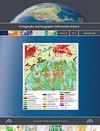无障碍防洪规划的主题触觉地图:设计与评估
IF 2.4
3区 地球科学
Q1 GEOGRAPHY
Cartography and Geographic Information Science
Pub Date : 2023-10-31
DOI:10.1080/15230406.2023.2264747
引用次数: 0
摘要
摘要在自然灾害缓解规划(NHMP)过程中,经常使用地图来分析社区对灾害的脆弱性,并说明潜在灾害的特征。但是,由于这些地图的编码信息依赖于视觉访问,因此,想要为社区的NHMP工作做出贡献的盲人或低视力(B/LV)人实际上被排除在涉及地图的任何阶段之外。因此,我们研究触觉洪水地图作为NHMP的可访问工具。我们的研究提出了一个使用现有资源、方法和设计惯例创建主题触觉洪水地图的工作流程,然后评估这些主题触觉地图,以了解B/LV用户的用户信心。这项工作提出了一种用于NHMP的触觉映射资源配置,并在使用这些资源时评估用户的信心。结果表明,在高风险情境下,低/低用户对使用触觉地图的反应积极,并且触觉地图可以扩大能够为NHMP做出贡献的人的数量和多样性。为了最大限度地发挥贡献,我们建议未来的触觉地图研究投入更多的精力来开发资源,供B/LV用户自己创建、编辑和分发地图。作者要感谢Michelle McManus、Naomi Rosenberg、Deborah Klein、Ken Quinn和Tim Prestby对这个项目的重要贡献。披露声明作者未报告潜在的利益冲突。数据可用性声明本研究的参与者不同意公开分享他们的数据,因此无法获得支持数据。本文的补充数据可以在线访问https://doi.org/10.1080/15230406.2023.2264747本文章由计算机程序翻译,如有差异,请以英文原文为准。
Thematic tactile maps for accessible flood mitigation planning: design and evaluation
ABSTRACTMaps are frequently employed in the natural hazard mitigation planning (NHMP) process for analyze a community’s vulnerability to hazards and illustrating the character of potential hazards. But because the encoded information of these maps relies on visual access, blind or low-vision (B/LV) people who want to contribute to their community’s NHMP efforts are therefore effectively excluded from any stage of the process involving maps. In response, we investigate tactile flood maps as an accessible tool for NHMP. Our study proposes a workflow for creating thematic tactile flood maps using existing resources, methods, and design conventions, and then evaluates those thematic tactile maps to understand user confidence amongst B/LV users. This work contributes a proposed configuration of tactile mapping resources to be used for NHMP and evaluates user confidence while using those resources. Results suggest that B/LV users respond positively to using tactile maps in a high-stakes context such as NHMP, and that tactile maps can expand the number and diversity of people who are able to contribute to NHMP. To maximize contributions, we recommend that future tactile map research invest a greater amount of attention to developing resources for B/LV people to create, edit, and distribute maps themselves.KEYWORDS: Usabilityuser experienceblindlow visiondisabilitydisasterhazard AcknowledgmentsThe authors would like to thank Michelle McManus, Naomi Rosenberg, Deborah Klein, Ken Quinn, and Tim Prestby for their essential contributions to this project.Disclosure statementNo potential conflict of interest was reported by the author(s).Data availability statementParticipants in this study did not agree for their data to be shared publicly, so supporting data is not available.Supplementary dataSupplemental data for this article can be accessed online at https://doi.org/10.1080/15230406.2023.2264747
求助全文
通过发布文献求助,成功后即可免费获取论文全文。
去求助
来源期刊
CiteScore
5.20
自引率
20.00%
发文量
23
期刊介绍:
Cartography and Geographic Information Science (CaGIS) is the official publication of the Cartography and Geographic Information Society (CaGIS), a member organization of the American Congress on Surveying and Mapping (ACSM). The Cartography and Geographic Information Society supports research, education, and practices that improve the understanding, creation, analysis, and use of maps and geographic information. The society serves as a forum for the exchange of original concepts, techniques, approaches, and experiences by those who design, implement, and use geospatial technologies through the publication of authoritative articles and international papers.

 求助内容:
求助内容: 应助结果提醒方式:
应助结果提醒方式:


